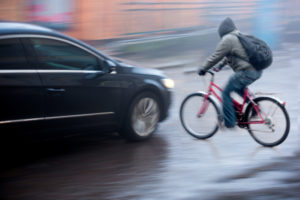24/7 Live Call Answering
(470) 558-0495Bicycle Safety Basics
 Bicycling is great exercise and a great way to get from place to place while reducing your carbon footprint. Unfortunately, bicyclists face many hazards, especially when sharing the roadway with motorists. According to the National Safety Council, approximately 1,000 bicyclists are killed in accidents each year. These basic safety tips will help protect you and your family when you are riding a bicycle.
Bicycling is great exercise and a great way to get from place to place while reducing your carbon footprint. Unfortunately, bicyclists face many hazards, especially when sharing the roadway with motorists. According to the National Safety Council, approximately 1,000 bicyclists are killed in accidents each year. These basic safety tips will help protect you and your family when you are riding a bicycle.
- Always wear a helmet. Head injuries are a major factor in bicycle-related deaths. You should always wear a properly-fitted, Consumer Product Safety Commission approved helmet, regardless of how long you intend to ride.
- Ride single-file and travel in the direction of traffic. Some people believe that riding against traffic (sometimes called “salmoning”) is safer than riding with traffic. These people believe that salmoning is safer because, when riding against traffic, the bicyclist is able to see drivers coming, rather than having motorists approach from behind. However, bicycle safety experts disagree for several reasons. First, motorists instinctively look for vehicles traveling with the flow of traffic and might pull onto a roadway without looking for bicycles traveling in the opposite direction. Also, riding against the flow of traffic increases the severity of a potential impact between a bicycle and a vehicle. For example, if the bicyclist is riding at 15 mph and vehicle comes up from behind traveling 40 mph, the impact speed would be 25 mph. However, if the bicyclist and the vehicle were approaching head-on, however, the impact speed would be 55 mph. Finally, riding against the traffic flow is against the law. So, if you are in an accident while riding against the flow of traffic, you might be found to be at fault.
- Be extra careful at intersections. Approximately 50% of bicycle accidents occur at intersections.
- Be visible. Don’t wear dark clothing.
- Be especially careful at night. According to the National Highway Traffic Safety Administration, most bicycle accidents occur at night. Be sure to equip your bicycle with reflectors and, when riding at night, wear reflective clothing.
- Watch for objects on the roadway. Tree branches, loose gravel, potholes, and drainage grates can all cause serious bicycle accidents.
- Obey street signs. Bicyclists are required to obey the same rules of the road that apply to motorists.
- Plan your route to minimize the time spent on busy roads and roads with narrow shoulders. Bicyclists take their lives into their hands whenever they ride close to vehicles traveling at a high rate of speed. All it takes to cause a catastrophic accident is for a motorist to be momentarily distracted and drift onto the bike lane or shoulder.
- Be careful in urban areas. Most bicycle accidents occur in urban areas. When passing parked cars, watch for car doors that might open suddenly. The best practice is to pass far enough away from parked cars (approximately 4 feet) to avoid being hit by an opening door.
- Don’t wear headphones when you ride. You need to be able to hear motorists as they approach.
- When passing a pedestrian or another bicyclist, give them an audible warning as you approach. (For example, “On your left!”)
Motorists can help. Give cyclists room when passing. When pulling onto a roadway, look to the right and to the left. Be aware that some bicyclists might be traveling against the flow of traffic. When exiting your car, use the hand farthest from the door to open the door. This technique is known as the Dutch Reach. Doing so will cause your body to turn, making it easy for you to check your side-view mirror and look back for oncoming bicycles and vehicles.
If you are injured in a bicycle accident involving a motorist, you may be able to bring a personal injury claim against the motorist. Also, your automobile insurance policy might provide benefits when you are hit by a car while on your bicycle. Finally, if you are injured due to a defect in the roadway, you may be able to bring a claim against the government entity or landowner responsible for maintaining the roadway. It is important to preserve evidence of the dangerous condition on the roadway that caused you to crash. Take photos, if possible.